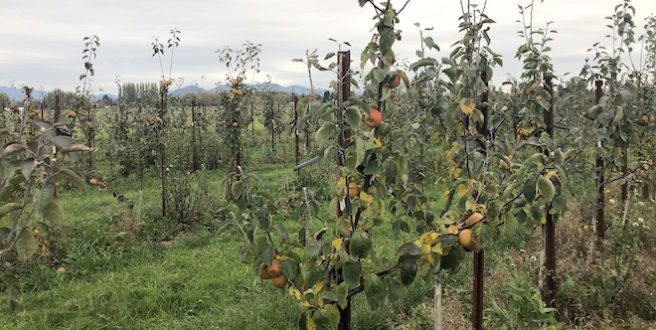

Feb 18, 2020Ground-harvested fruit, with care, OK for cider use
The global cider market size was estimated at $4.33 billion in 2018, and is anticipated to register an annual growth rate of 3.1% through 2025. Fruit growers remain intrigued by the prospect of expanded outlets for their products in the cider-making market, but processes involved in harvesting and marketing the fruit require special care.
Using ground-harvested fruit for cider production must be done in compliance with the Food Safety Modernization Act (FSMA) Produce Safety Rule. Apples that have come in contact with the ground outside of normal harvesting methods may be used for human consumption only if there has been adequate processing to reduce food safety concerns.


Bri Ewing Valliere, clinical assistant professor, Washington State University’s School of Food Science, stressed the importance of following proper procedures in a presentation to growers and hard cider producers at the Northwest Michigan Orchard & Vineyard Show in Acme, Michigan.
Cider can be made from any apple. “Cider apples” refers to cider-specific cultivars that are typically considered either bittersweet or bittersharp. These apples serve no alternative purpose and are destined for alcoholic fermentation for cider.
Because they are unlikely to be consumed raw, as of January 2019, cider apples, winegrapes and hops were considered “raw produce destined for further processing.” They may qualify for a processing exemption if they are accompanied by a disclosure statement.
“If you are ground-harvesting fruit that will be used for fermentation, you should have documentation that states this fruit is not processed to adequately reduce the presence of microorganisms of public health significance,’” Ewing Valliere said. “This helps reduce your liability in this situation because you are making it very clear that you have done no processing steps to reduce the presence of microorganisms.”
“One thing you do have to do if you’re selling this fruit to a cider maker who will process it, you have to receive written assurances from the processor that they will take the responsibility to reduce the microorganisms,” Ewing Valliere said. “If you are a grower, these are really good things to take note of.”
Although apples are clearly defined as covered, non-excluded produce under 21 CFR Part 112 of the Produce Rule, the concern of using ground-harvested apples to produce alcoholic cider may be minimized by the use of several orchard management and food processing strategies, she said.
“For growers selling dropped apples, exclusion of potential contaminants and careful documentation of the ground-harvested produce is paramount,” she said. “For cider producers, incorporation of validated processing steps, if not already in place, will ensure that written assurances can be provided to growers supplying dropped cider apples.”


The Produce Safety Rule states that fruit that has unintentionally come in contact with the ground may not be used for human consumption unless there have been sufficient processing steps to reduce the risk of human pathogens in the final food product. Cider apples destined for hard cider production in many regions have traditionally been harvested at full ripeness when the fruit naturally drops or is easily shaken off the tree.
Although apples in the United States are typically hand-harvested before full ripeness to allow for long-term storage of fresh market apples, it is not uncommon in other countries to allow fruit destined for cider production to fully ripen on the tree. Once fruit is fully ripe, it will drop naturally or by mechanically shaking the tree to encourage fruit drops. The fruit is then mechanically swept up and collected for processing.
Because of high labor costs and workforce shortages, this “shake and sweep” method is advantageous and may also result in cost savings compared with hand-harvesting. Despite these advantages, there are some important tradeoffs to consider. Because of the bruising and damage that occurs when fruit is shaken and allowed to drop from the tree, fruit must be processed immediately, as it will rot more rapidly.
Fruit contact with the orchard floor may raise pathogen-related concerns due to potential contact with contaminated water, animal feces, untreated manure, soil, or airborne contaminants. Although there are inherent risks in any fresh produce operation, several pathogens have been reported in apple juice and sweet (nonalcoholic) cider.
“It is possible for growers to harvest apples for cider production from the ground, but both growers and cidermakers must understand how to best address food safety concerns and ensure that the process adopted for cider manufacture reduces or eliminates pathogen contamination,” Ewing Valliere said.
— Gary Pullano, managing editor














